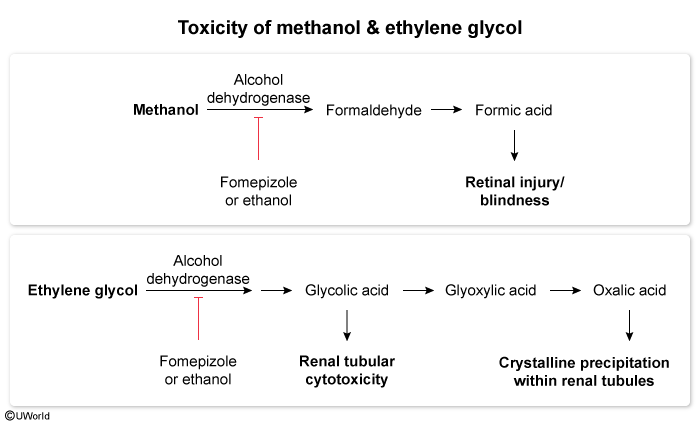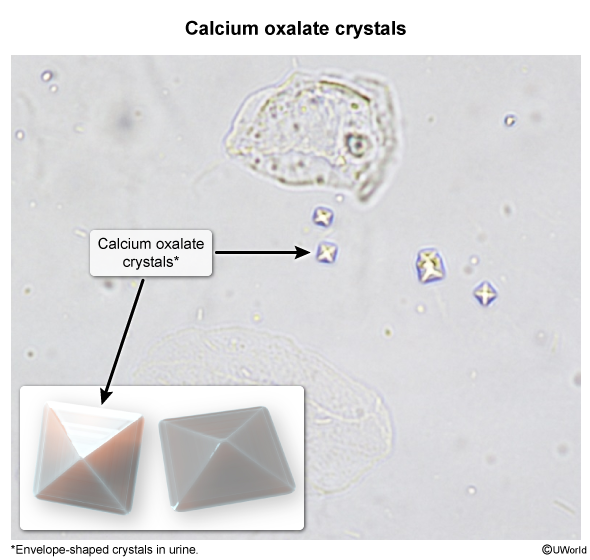Ethylene Glycol Poisoning
Article Sections
Introduction
Ethylene glycol is a colorless, sweet, toxic alcohol commonly found in antifreeze, brake fluid, and industrial solvents. Ethylene glycol poisoning, which typically occurs from accidental or intentional oral ingestion, is characterized by altered mental status, an elevated serum osmolar gap, profound anion gap metabolic acidosis, and acute renal failure. The ingestion can be fatal if not promptly treated with the antidote, fomepizole.
Risk factors
Most poisonings are related to one of the following:
- Accidental ingestion: particularly in children due to the alcohol's sweet taste
- Intentional ingestion: suicide attempt or those seeking inebriation without access to ethanol (eg, alcohol use disorder, underage)
Pathophysiology
Ethylene glycol is relatively nontoxic in its parent form and causes mainly lethargy and sedation (similar to alcohol intoxication). Toxicity results when ethylene glycol is metabolized by alcohol dehydrogenase into
Continue Learning with UWorld
Get the full Ethylene Glycol Poisoning article plus rich visuals, real-world cases, and in-depth insights from medical experts, all available through the UWorld Medical Library.
Figures

Images
